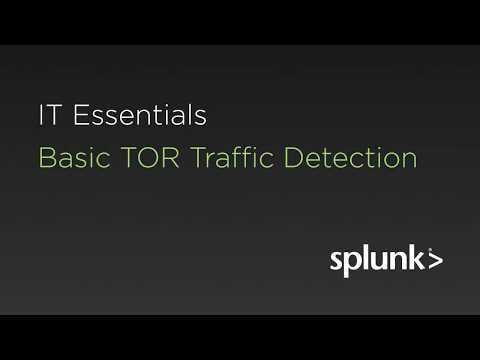- What is an NTLM relay attack?
- What type of attack is NTLM vulnerable to?
- Is NTLMv2 replay resistant?
- Can you relay NTLMv2 hashes?
- How does a relay attack work?
- Can NTLM be cracked?
- Is NTLM more secure than Kerberos?
- What are the mitigations against NTLM vulnerabilities?
- How do I block NTLM?
- What is the difference between NTLM v1 and v2?
- What is the difference between NTLM and NTLMv2?
- Is NTLMv2 obsolete?
- What is a relay attack cyber security?
- What is NTLM and how it works?
- How do I know if NTLM is being used?
- What happens if NTLM is disabled?
- What are examples of relay attack?
What is an NTLM relay attack?
NTLM relay attacks allow attackers to steal hashed versions of user passwords, and relay clients' credentials in an attempt to authenticate to servers.
What type of attack is NTLM vulnerable to?
Security vulnerabilities.
The relatively simplistic form of password hashing makes NTLM systems vulnerable to several modes of attacks, including pass-the-hash and brute-force attacks.
Is NTLMv2 replay resistant?
NTLM and NTLMv2 authentication is vulnerable to various malicious attacks, including SMB replay, man-in-the-middle attacks, and brute force attacks.
Can you relay NTLMv2 hashes?
NetNTLM hashes can only be utilized for relaying attacks or for potential brute-forcing using Hashcat, for example. Another pro tip is that NTLMv2 hashes are harder to crack than their NTLMv1 counterpart but not impossible for user accounts!
How does a relay attack work?
A relay attack works by essentially using a device which acts as a “receiver” to tap into the key fob (also known as a hardware token that provides on-device, one-factor authentication for access to a system or device like a car) signal.
Can NTLM be cracked?
Windows 10 passwords stored as NTLM hashes can be dumped and exfiltrated to an attacker's system in seconds. The hashes can be very easily brute-forced and cracked to reveal the passwords in plaintext using a combination of tools, including Mimikatz, ProcDump, John the Ripper, and Hashcat.
Is NTLM more secure than Kerberos?
Why Is Kerberos Better Than NTLM? Kerberos is better than NTLM because: Kerberos is more secure – Kerberos does not store or send the password over the network and can use asymmetric encryption to prevent replay and Man-in-the-Middle (MiTM) attacks.
What are the mitigations against NTLM vulnerabilities?
Additional Mitigations
Enforce Signing (SMB/LDAP) and Extended Protection for Authentication (EPA) for all relevant servers, especially the AD-CS servers, which are a common target of this attack. Track any failed/successful NTLM relay attempts performed in your domain network. Disable NTLM.
How do I block NTLM?
To disable NTLM, use the Group Policy setting Network Security: Restrict NTLM. If necessary, you can create an exception list to allow specific servers to use NTLM authentication. At a minimum, you want to disable NTLMv1 because it is a glaring security hole in your environment.
What is the difference between NTLM v1 and v2?
The difference lies in the challenge and in the way the challenge is encrypted: While NTLMv2 provides a variable-length challenge, the challenge used by NTLMv1 is always a sixteen byte random number. NTLMv1 uses a weak DES algorithm to encrypt the challenge with the user's hash.
What is the difference between NTLM and NTLMv2?
NTLM has two versions – NTLMv1 and NTLMv2. NTLMv2 suppose to offer better security than its previous version, and to some extent it does provides better defense against relay and brute force attacks, but does not completely block them.
Is NTLMv2 obsolete?
This authentication method, which uses NTLMv2, is not recommended for security reasons.
What is a relay attack cyber security?
In a classic relay attack, communication with both parties is initiated by the attacker who then merely relays messages between the two parties without manipulating them or even necessarily reading them.
What is NTLM and how it works?
NTLM credentials are based on data obtained during the interactive logon process and consist of a domain name, a user name, and a one-way hash of the user's password. NTLM uses an encrypted challenge/response protocol to authenticate a user without sending the user's password over the wire.
How do I know if NTLM is being used?
To find applications that use NTLMv1, enable Logon Success Auditing on the domain controller, and then look for Success auditing Event 4624, which contains information about the version of NTLM.
What happens if NTLM is disabled?
When NTLM is blocked, it is not completely disabled on a system because the local login process still uses NTLM. Even if NTLM is blocked, logging in with a local account is still possible. The settings Incoming NTLM traffic and Outgoing NTLM traffic to remote servers can be configured on all systems.
What are examples of relay attack?
In contrast, in a relay attack an attacker intercepts communication between two parties and then, without viewing or manipulating it, relays it to another device. For example, a thief could capture the radio signal from your vehicle's key fob and relay it to an accomplice who could use it to open your car door.
 Torgeek
Torgeek


